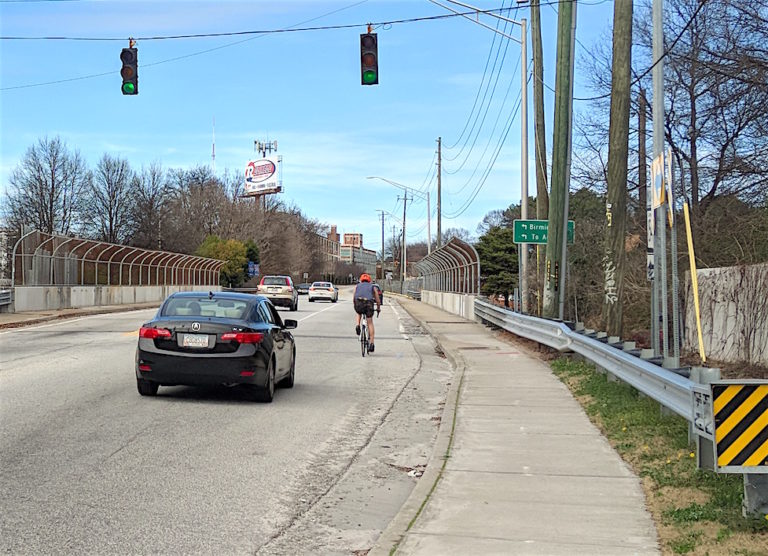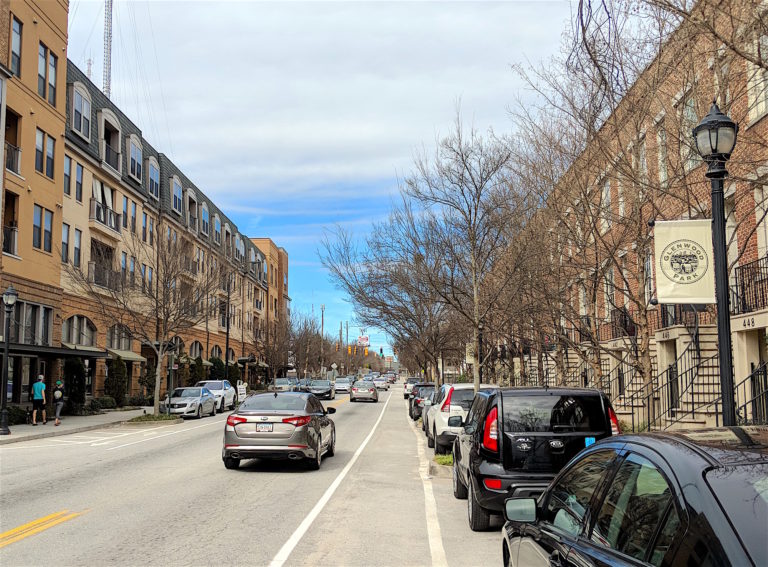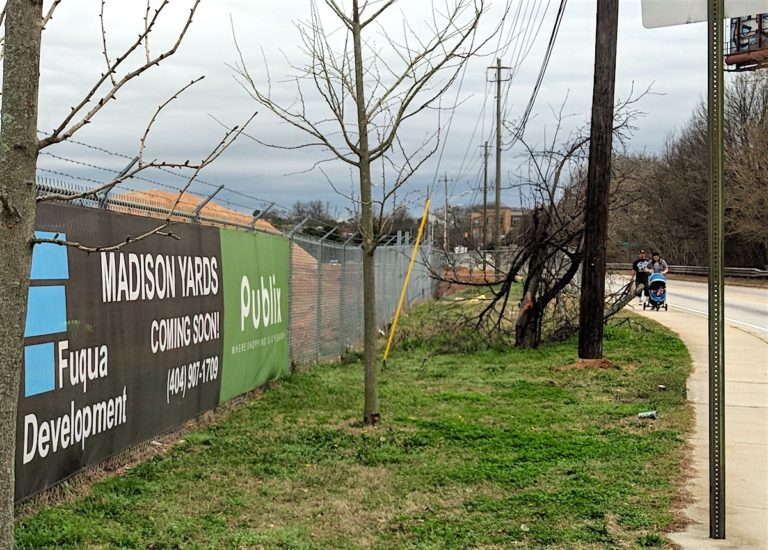Thirteen years ago, my wife and I moved to Glenwood Park. We loved the community feel, the village scale density of 18-20 units per acre and the ability to walk to nearby commercial amenities that would surely come. We’ve watched the neighborhood fill up and turn over as young singles moved in, had children and left seeking public and private schools for their kids in other neighborhoods. We’ve seen empty nesters and families committed to neighborhood schools take their place. And we are still waiting on the Atlanta BeltLine to make its way down Bill Kennedy Way (BKW).
It’s ironic that Bill Kennedy Way is named after a man who served in Atlanta’s planning department for 33 years. If there is any remnant of good planning, design and land use policy left in Atlanta, one could look no further than Bill Kennedy to recognize one of the visionaries of Atlanta development. Bill died in 2003. The highway overpass between Glenwood and Memorial Drive was renamed to memorialize him.
The challenge of putting the BeltLine here

From the first time I saw Ryan Gravel’s hand-drawn map of the BeltLine, BKW was a challenge. It’s a two-lane street, split by on- and off-ramps onto I-20. The good news at that time was that Glenwood Park was in design and, though we needed to move the concrete plants eventually, it was somewhat of a blank canvass. Our hope was that we could design the corridor to accommodate the BeltLine – both transit and path- and make a critical connection from the north to the south side as efficient as possible. We knew then that every delay a streetcar has while running in traffic, every time the path crosses with cars, we interrupt the flow, timing and safety of the BeltLine as a people-mover for a modern, transit oriented city.
Since that time, we’ve seen one-off development plans approved along the corridor that have eroded the flexibility that we needed to make this critical connection work. The ENSO apartment complex failed to continue the street grid at Garrett Street and BKW. The Kroger development has its own bar, drive through pharmacy, gas station and footprint so expansive that even able-bodied people are tempted to grab a ‘rascal’ to drive to the back acres to pick up products. But worse than that, it has caused a traffic nightmare and a “rerouting” of the Atlanta BeltLine at Faith Avenue. And now another suburban-style shopping center is coming at the new Madison Yards development, with two more curb cuts across the BeltLine, and a proposed traffic light at the I-20 on-ramp.
That’s five traffic lights on a two-lane street that is four-tenths of a mile long and needs to accommodate the BeltLine, a transit corridor as well as cars and delivery trucks. These are just some of the poor development decisions that have been approved since we first started working on the BeltLine seventeen years ago, and which threaten the success and vision of the project.

I’ll admit to some excitement at the prospect of walking to a movie theatre and having a grocery store across the street. But it’s not about having one and not the other. It’s really about scale and how we want to grow the city. A Glenwood Park II with a city scale street front grocery store, a theatre that shows one or two first run movies rather than 15 or 24, a mix of housing that includes affordable units (instead of a storage facility) would have been ideal. But we failed to plan and defend the land use priority for BeltLine transit and trail along that corridor, even though we’ve had seventeen years notice of what was to come. But that’s just water traffic under and on the bridge.
This is fundamental to moving the needle on equity in Atlanta

What’s critical right now is that we need to recommit to connecting our city in a smart and inclusive way. Let’s stop equivocating on whether there will be transit on the Atlanta BeltLine or not. Cities focused on design, equity and mobility would give anything to have a ready-made 22-mile transit corridor available close to density and existing transit lines.
Connecting the north side of the BeltLine with the south side, and the entire corridor to MARTA transit, is fundamental to moving the needle on equity in Atlanta. We will give everyone access to all of the amenities across the city via an efficient, safe and AVAILABLE transit corridor or we won’t. Hopefully our new Mayor and City Council will recognize the need to come together and implement this vision by defending this and other critical corridors against incompatible encroachment. It’s as simple as that.
And if you buy into that vision, then a citywide fight to preserve the connection and right of way across Bill Kennedy Way is not reserved to those of us who live in Glenwood Park and surrounding neighborhoods. It’s fundamental to our future as a sustainable city. If Bill Kennedy were still here, I believe he’d tell you so himself.
This is a guest post from Cathy Woolard, who formerly served as a President of Atlanta City Council, where she was an early supporter of the Atlanta BeltLine.
